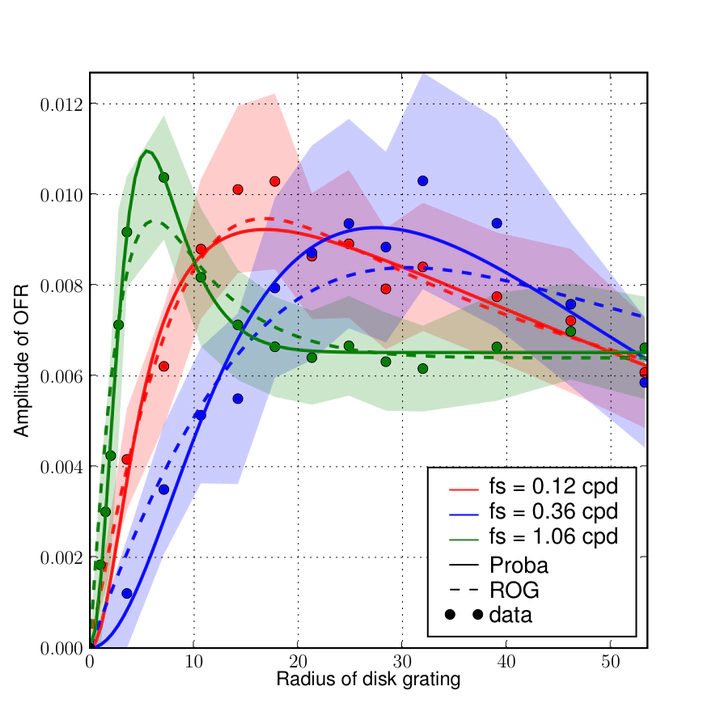Decoding the population dynamics underlying ocular following response using a probabilistic framework

Abstract
The machinery behind the visual perception of motion and the subsequent sensorimotor transformation, such as in Ocular Following Response (OFR), is confronted to uncertainties which are efficiently resolved in the primate’s visual system. We may understand this response as an ideal observer in a probabilistic framework by using Bayesian theorỹWeiss02 which we previously proved to be successfully adapted to model the OFR for different levels of noise with full field gratings or with disk of various sizes and the effect of a flickering surround̃Perrinet07neurocomp. More recent experiments of OFR have used disk gratings and bipartite stimuli which are optimized to study the dynamics of center-surround integration. We quantified two main characteristics of the global spatial integration of motion from an intermediate map of possible local translation velocities: (i) a finite optimal stimulus size for driving OFR, surrounded by an antagonistic modulation and (ii) a direction selective suppressive effect of the surround on the contrast gain control of the central stimuliB̃arthelemy06,Barthelemy07. Herein, we extended in the dynamical domain the ideal observer model to simulate the spatial integration of the different local motion cues within a probabilistic representation. We present analytical results which show that the hypothesis of independence of local measures can describe the initial segment of spatial integration of motion signal. Within this framework, we successfully accounted for the dynamical contrast gain control mechanisms observed in the behavioral data for center-surround stimuli. However, another inhibitory mechanism had to be added to account for suppressive effects of the surround. We explore here an hypothesis where this could be understood as the effect of a recurrent integration of information in the velocity map. F. Barthelemy, L. U. Perrinet, E. Castet, and G. S. Masson. Dynamics of distributed 1D and 2D motion representations for short-latency ocular following. Vision Research, 48(4):501–22, feb 2007. doi: 10.1016/j.visres.2007.10.020. F. V. Barthelemy, I. Vanzetta, and G. S. Masson. Behavioral receptive field for ocular following in humans: Dynamics of spatial summation and center-surround interactions. Journal of Neurophysiology, (95):3712–26, Mar 2006. doi: 10.1152/jn.00112.2006. L. U. Perrinet and G. S. Masson. Modeling spatial integration in the ocular following response using a probabilistic framework. Journal of Physiology (Paris), 2007. doi: 10.1016/j.jphysparis.2007.10.011. Y. Weiss, E. P. Simoncelli, and E. H. Adelson. Motion illusions as optimal percepts. Nature Neuroscience, 5(6):598–604, Jun 2002. doi: 10.1038/nn858. This work was supported by EC IP project FP6-015879, ‘‘FACETS’’.